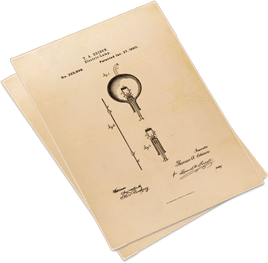Maybe Not.
In May, 2015, Apple was awarded $399 million dollars in a judgment against Samsung for infringement of three design patents. The amount of the award was 100% of the profits Samsung obtained through its sales of the infringing smartphones. The design patents generally covered the shape of the original iPhone and its user interface (i.e., its icons).
However, last month the Supreme Court overturned that decision. The patent damages statute generally requires an award of 100% of the profits from an infringing sales. However, the Court held that when determining damages related to a design patent the fact finder must determine what portion of the total profits are attributable to the claimed design. In other words, did Samsung make $399 million based on the curvature of the phone and the display of icons? Or, did their profits come from other factors such as the functional capabilities of the phones or unclaimed design elements?
Design patents that cover the non-functional design of articles of manufacture have been around for as long as utility patents. But for decades design patents were largely ignored. That started to change in 2009 when the Supreme Court made them easier to enforce. Since that time design patents have been used more and more frequently by all kinds of inventors and product designers, including tech giants such as Apple, to protect the look of their products from imitators. This latest ruling from a Supreme Court may diminish to a certain degree the value of the design patent, or it may simply mean that more design patents are needed for multi-component designs, but by no means does it invalidate their usefulness. Are your designs protected?


